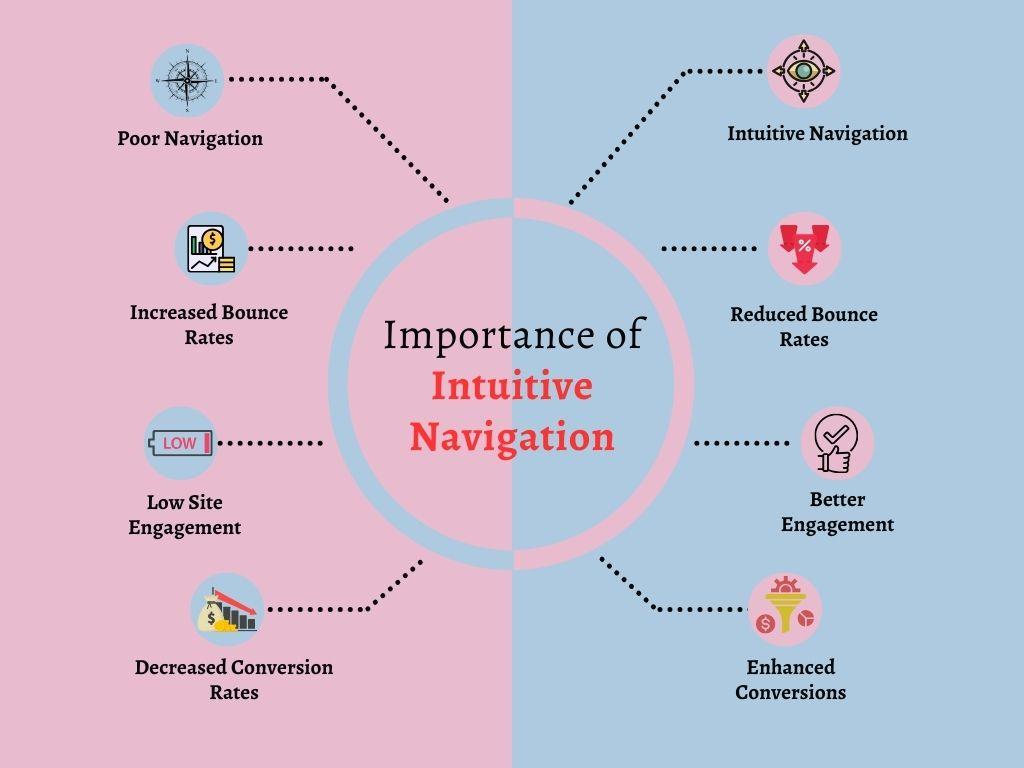In the ever-evolving landscape of digital marketing, the interplay between search engine optimization (SEO) and user experience (UX) has emerged as a defining factor in the success of online platforms. As we navigate an age where attention spans are fleeting and competition is fierce, striking a harmonious balance between these two critical elements is not just beneficial—it’s essential. This article delves into the intricate relationship between SEO and UX, exploring how enhancing one can elevate the other. By understanding the synergy between providing valuable, user-friendly experiences and optimizing for search engines, businesses can create websites that not only attract visitors but also engage and retain them. Join us as we uncover the strategies and best practices that can help you leverage this powerful alliance to boost your online presence and foster lasting connections with your audience.
Understanding the Synergy Between SEO and User Experience
In the dynamic world of digital marketing, the interplay between search engine optimization and user experience forms a vital foundation for online success. SEO focuses on improving visibility in search engines, while user experience (UX) emphasizes how users interact with a website. When these elements work in harmony, the result is a website that not only attracts traffic but also encourages visitors to engage and convert. Key practices that enhance this synergy include:
- Mobile Responsiveness: Ensures that sites function well across various devices, which Google considers a ranking factor.
- Page Load Speed: Enhanced loading times lead to lower bounce rates, improving both user satisfaction and search ranking.
- Easy Navigation: Intuitive site structures help users find information quickly, boosting engagement metrics that influence SEO.
Furthermore, the content itself plays a crucial role in establishing this connection. High-quality, relevant content that satisfies user intent not only attracts visitors but also earns quality backlinks over time, contributing to improved SEO rankings. An effective approach involves:
| Element | Impact on SEO | Impact on User Experience |
|---|---|---|
| Content Quality | Attracts organic traffic | Engages users |
| Internal Links | Boosts page authority | Facilitates easier navigation |
| Meta Tags | Improves click-through rates | Provides clear context for content |

Crafting Intuitive Navigation for Improved Engagement
Creating a seamless navigation experience is fundamental in capturing users’ attention and guiding them through your site effortlessly. Intuitive navigation reduces the cognitive load on visitors, allowing them to find what they need quickly and easily. When designing your navigation system, consider these key elements:
- Clarity: Use clear labels that reflect the content beneath them.
- Consistency: Maintain uniformity in your navigation layout across all pages.
- Hierarchy: Establish a logical structure that highlights the most important sections.
To further enhance user engagement, the use of breadcrumbs can be effective, providing users with context on their current location within your site. Additionally, integrating a search feature allows visitors to bypass navigation menus entirely. Here’s a simple table showcasing different navigation types and their benefits:
| Navigation Type | Benefits |
|---|---|
| Top Navigation | Oftentimes used for primary actions; creates an organized look. |
| Dropdown Menus | Allows for additional options without cluttering the main interface. |
| Sidebars | Provides ample space for links to related content or categories. |

Optimizing Website Speed as a Key Factor in User Satisfaction
Website speed is no longer just a technical metric; it has transformed into a critical element that directly impacts user satisfaction. Research demonstrates that users expect a page to load within two to three seconds. If a site takes longer, there’s a high likelihood they will abandon it and seek alternatives. Fast-loading pages create a seamless experience, allowing visitors to engage with content rather than waiting in frustration. Focusing on optimizing speed can significantly boost user retention and lower bounce rates, making it an indispensable aspect of website design.
To enhance performance and provide users with a gratifying experience, consider implementing the following strategies:
- Image Optimization: Compress images without sacrificing quality to reduce load times.
- Minification of CSS and JavaScript: Remove unnecessary characters to streamline code.
- Utilize Content Delivery Networks (CDNs): Distribute content closer to users geographically.
- Leverage Browser Caching: Store certain data so it doesn’t have to be reloaded on subsequent visits.
To visualize the impact of site speed on user behavior, we can succinctly look at the correlation between loading times and user satisfaction:
| Loading Time | Estimated Page Abandonment Rate |
|---|---|
| 1 second | 11% |
| 3 seconds | 32% |
| 5 seconds | 90% |
This stark contrast in user behavior underscores why optimizing website speed is a foundational aspect of a satisfying experience, which ultimately feeds into better SEO outcomes.

Leveraging Content Quality to Elevate Both SEO and User Experience
In the realm of digital marketing, the intersection between content quality and user experience is crucial for achieving strong SEO performance. High-quality content not only attracts visitors but also retains their interest, fostering a sense of trust and authority. To truly leverage this connection, consider these essential elements that can enhance both SEO and user engagement:
- Relevance: Content should be tailored to meet the needs and interests of your target audience.
- Clarity: Clear, concise writing makes it easier for users to navigate your site and understand your message.
- Visual Appeal: Incorporating images, videos, and infographics can make content more engaging and accessible.
- Structured Formatting: Break content into scannable sections using headers, bullet points, and short paragraphs to improve readability.
| Content Quality Aspects | Impact on SEO | User Experience Benefits |
|---|---|---|
| Keyword Optimization | Increases ranking potential | Helps users find relevant information |
| Engaging Headlines | Improves click-through rates | Catches user attention instantly |
| Internal Linking | Boosts site structure for search engines | Eases navigation and content discovery |
By focusing on these aspects, businesses can craft content that resonates with their audience while simultaneously sending positive signals to search engines. The result is a dual benefit: improved search rankings and a more satisfying user experience. Balancing these elements creates a symbiotic relationship where quality content drives traffic and encourages deeper exploration of your site, ultimately fostering customer loyalty and higher conversion rates.
In Retrospect
In the ever-evolving landscape of digital marketing, the pursuit of an optimal user experience is not merely a supplementary strategy but a foundational pillar that fortifies your SEO efforts. As we’ve explored, the synergy between user experience and search engine optimization isn’t just about ticking boxes for algorithms; it’s a commitment to creating a web environment that caters thoughtfully to your audience.
By embracing this harmonious balance, brands not only enhance their visibility but foster genuine connections with users, leading to higher engagement, increased retention, and ultimately, greater success. As you move forward in implementing these strategies, remember that the true essence of the web lies in its ability to connect people with the information and experiences they seek.
In this intricate dance of design, content, and interaction, may your approach be guided by the understanding that a satisfied user is the best advocate for your brand — and the most powerful ally in your SEO journey. With this in mind, venture forward with creativity and empathy, and watch as your online presence flourishes.





